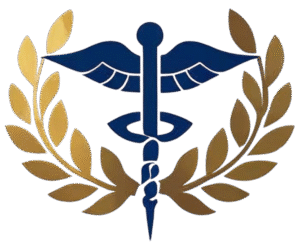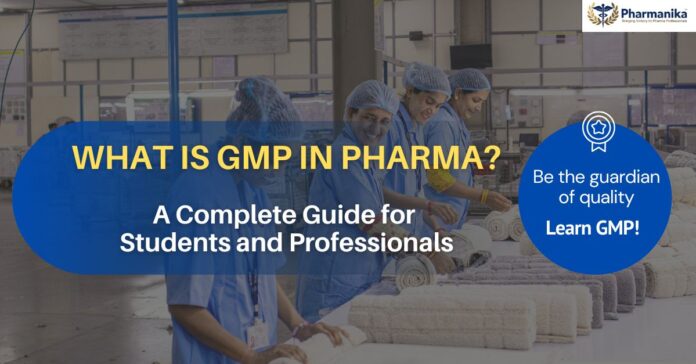What is GMP in Pharma?
A Complete Guide for Pharma Students and Professionals
Have you ever wondered how the medicines that you take in your everyday life are made? And whether you can trust every pill or vaccine, like is it safe or not? That’s where Good Manufacturing Practices (GMP) comes in. GMP in Pharma (Good Manufacturing Practices), play a crucial role in ensuring the medicine’s safety and efficacy.
Before GMP in Pharma came into the picture, medicines were commonly made without any proper inspections. And the result? Unsafe products that sometimes did more harm than good to human life.
For example, the Thalidomide incident, in the late 1950s and 1960s, where a drug caused birth defects due to improper testing, which led to the critical need for stricter manufacturing rules. In response to it, the Regulatory bodies worldwide decided to establish GMP guidelines for public health.
At Present, GMP in Pharma has become the backbone of drug manufacturing. It makes clear rules for producing, testing, and storing drug products. Whether it is a pain killer or a vaccine, GMP ensures that the product meets the same quality, no matter where in the world it is made.
Knowing about GMP is more than just a requirement for the pharmacy students and professionals. It helps the professionals and students to understand how each step in making the drug products affects the patients safety and the reputation of the pharmaceutical company.
The present article study tells about what GMP is, why it is important to know about it, its key principles, types, and the risks of not following it. Let’s know NOW!
WHAT IS GMP IN PHARMA?
Good Manufacturing Practice (GMP) is a system to make sure that the drug products made are safe with good quality. It includes everything from the raw materials to equipment used during the manufacturing to training of personnel and documentation.
To simplify, GMP means doing things right the first time and every time. GMP in Pharma makes sure that every tablet, capsule, or injection that you take is made with safety, is clean and documented.
GMP is not just a requirement; it’s a worldwide standard. Major organizations such as the World Health Organization (WHO), the U.S Food and Drug Administration (FDA) and the European Medicines Agencies (EMA) have developed their own GMP guidelines. The details may be different, but the goal is the same: To protect human health by ensuring the consistency of quality to make medicines worldwide.
The main Goal of GMP in Pharma is to address three main areas
- To make sure the Product Quality, Safety, and Efficacy
- To reduce Risks
- To build Consumer Trust and Regulatory Compliance
General Requirements For GMP (Buildings & Facilities)
- Location: The location should be able to allow easy movements for materials and people to avoid mixing- ups and contamination of the products in the manufacturing area.
- Good ventilation : It is important to prevent dust and particles from spreading, and good lighting to make sure accuracy.
- Cleanliness : it is very important. It is important to follow regular cleaning schedules and keeping equipment in good condition.
- Calibrating Equipment: Checking and adjusting machines regularly to make sure that they work accurately. Preventive steps, such as keeping raw materials separate from the finished products and specific areas for certain tasks, will help in reducing contamination and confusion.
GMP Guidelines In Pharma
The following GMP guidelines in pharma helps to maintain safety, efficacy and product consistency. Below are the key principles For GMP in Pharma
- Written Procedures: Every process should be clearly documented so that it can be followed the same way each time
- Proper Documentation: “If it’s not written down, it didn’t happen” Accurate documentation makes sure the traceability and accountability.
- Qualified Personnel: Only the trained and competent staff should handle manufacturing and quality control operations.
- Correct materials: Use only the tested and approved raw materials to make sure that the product is safe and consistent.
- Approved Process: Manufacturing steps should be verified and approved before being used regularly.
- In Process Quality Control: Quality should be checked continuously during production, not just at the end.
- Proper Storage and distribution: Products should be stored and shipped under the suitable conditions to maintain their integrity.
- Maintenance and Cleanliness: Clean equipment and premises maintenance is important to avoid contamination and make sure of accuracy.
- Validation and Qualification: All the Processes, systems, and equipment should be verified to prove that they work as intended.
- Handling Complaints and Recalls: A clear system must be there to handle product complaints and recall faulty batches immediately.
Categories of GMP In Pharma
- Manufacturing GMP: To make sure that the products are made in a controlled and consistent manner.
- Laboratory GMP: It involves testing the products, equipment checking, and data recording for accurate results.
- Distribution GMP:To make sure proper packaging, Labeling and transport is done to maintain product quality during production.
- Clinical GMP: To Ensure quality and ethics in the materials used during the clinical trials.
- Packaging GMP: To make sure that the packaging and labels are correct to avoid mistakes.
Risks Of Non-Compliance
- Product Recalls: The Medicines that are contaminated or wrongly labelled may need to be recalled, that will waste time and resources.
- Regulatory Penalties: The Authorities might give warnings, suspend licenses or even seize the companies.
- Loss of Trust: If a company loses its creditability, it is hard to regain it back.
- Patient Harm: The products that are not safe to use may cause harm or even death to the patients sometimes.
- Legal Consequences: Not following the rules can lead to lawsuits, financial loss, and long term brand damage.
Good Manufacturing Practice (GMP) is the heart of pharmaceutical quality assurance. It makes sure that every product that reaches a patient is made with care, consistency, and integrity. GMP bridges the trust between manufacturers and consumers, from well- trained personnel and clean facilities, to strict documentation and verifications.
For every pharmacy student and professional, knowing about GMP in Pharma is not just about learning; it is a lifelong promise to improve quality. Medicine is changing fast, and therefore are its challenges. To help with healthcare, people must continue to learn about GMP. In the end, the GMP teaches us that quality is not just added later; it is the part of the product from the beginning itself. It is not tested into the product- it is built into it.




